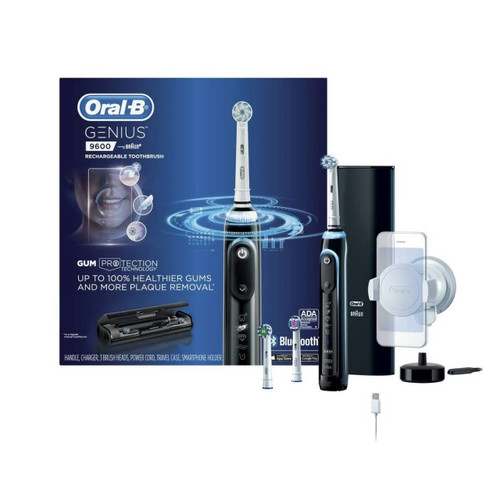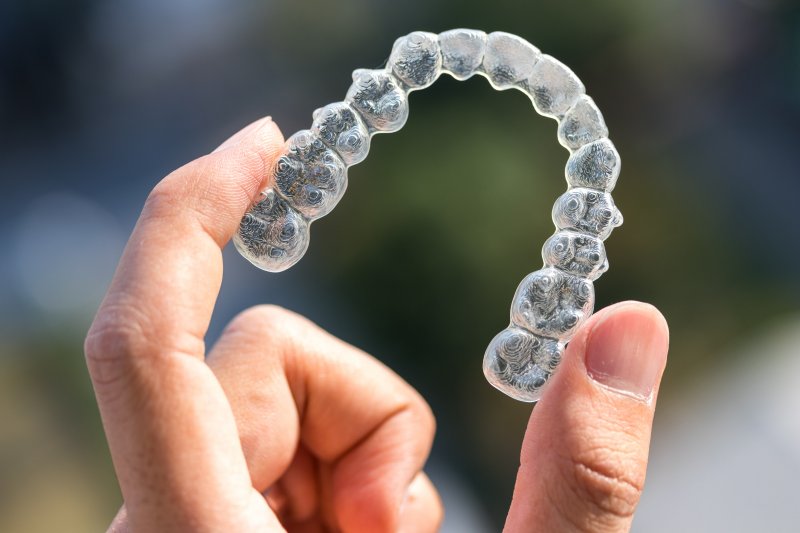GO ELECTRIC
November 28, 2022
 Like many dental practices today, our office sends an email request for patients to leave comments about their visit to our office. Most comments are positive, for which we are grateful. However, all comments are helpful to the business to understand what patients are thinking. If one person is thinking it, most likely there are others.
Like many dental practices today, our office sends an email request for patients to leave comments about their visit to our office. Most comments are positive, for which we are grateful. However, all comments are helpful to the business to understand what patients are thinking. If one person is thinking it, most likely there are others.
We received the following comment on our website from a patient who was in to see one of our hygienists:
“My hygienist is always very pleasant, conversational and professional in her services. However, I can do without the constant sales pitch to buy an electric toothbrush from your office. There is no evidence that an electric is any better than a good, manual 2-minute brush, and I don’t have any arthritis or dexterity issues.”
I really appreciate feedback from patients like this. Your own dental office would too. In my response to the patient, I explained that I didn’t like the fact that the patient had the feeling he was trying to be sold something. For the patient to feel that the only benefit was monetary to our office means the communication was inadequate. Most dental offices are not selling electric toothbrushes to make money.
We keep our preference of electric toothbrushes in stock for convenience and cost savings for the patient. The shared benefit for the dentist and the patient is improved health. We want our patients to have healthier gums and less cavities.
Back in the beginning of my professional career, I was an advocate of the manual toothbrush. I was convinced that anyone could get the same results with a manual toothbrush, compared with any electric/power toothbrush. It wasn’t until I actually tried a power toothbrush, and stuck with it, that I was convinced there was a distinct difference.
It is now common practice for us, and likely most dental practices, to ask patients if they use a manual toothbrush or an electric toothbrush. When we ask this question, we have also found that it is just as important to ask what kind of power toothbrush is used. One that sits in a charger is far more effective than one that you put batteries in, though it does cost more.
There have been numerous studies that have compared the effectiveness of both rotating and sonic power toothbrushes. In one study, 131 individuals were split into two groups – oscillating/rotating vs sonic power srushes. Prior to the study, 63% and 58% were manual toothbrush users, respectively. Each participant brushed twice daily during a four-week period using their assigned powered toothbrush and a standard toothpaste.
Researchers graded effectiveness of their plaque removal using a specific plaque-grading index. While both groups showed significant improvement when compared to manual brushing, the oscillating/rotating brush was better. 97% of the oscillating/rotating group saw a reduction in whole-mouth plaque, compared with 64% of the sonic participants.
“The current study demonstrated superior plaque reductions with an advanced oscillating/rotating power brush compared to a novel sonic brush, corroborating previous studies demonstrating the superiority of oscillating-rotating power brushes relative to sonic brushes,” the researchers concluded.
While using a manual toothbrush can be effective, it is clear based on this study and others, that a good quality power toothbrush is better. It’s time to change if you still use a manual brush.
Please email me if you would like a recommendation; these make great presents!
Dr. St. Clair maintains a private dental practice in Rowley and Newburyport dedicated to health-centered family dentistry. If there are certain topics you would like to see written about or questions you have please email them to him at jpstclair@stclairdmd.com. You can view all previously written columns at www.jpeterstclairdentistry.com/blog.
Off-Track with Your Invisalign Treatment? Here Are 4 Tips to Help!
November 23, 2022

Getting a straighter smile became incredibly convenient of Invisalign in the late 1990s. The innovative clear aligners provided people of all ages a way to effectively correct misaligned teeth with virtually undetectable treatment! It has now helped over 5 million people get the smile of their dreams. However, those perfected pearly whites can be delayed if you get off course from your Invisalign treatment plan. Here are four tips to help you get back on track.
THE FINAL PUSH!
November 21, 2022

November is almost over! It’s crunch time to get everything done that we haven’t gotten done during the rest of the year. For those with remaining dental benefits, it’s also the time of year to consider utilizing those so you don’t lose them.
Unused dental benefits go directly back to the insurance company, which generates hundreds and hundreds of thousands of dollars for the insurance companies each year. Dental insurance companies count on the fact that many people will not claim their $1000 or so in benefits by the end of the calendar year. Those with dental benefits should look for legitimate means to use these benefits before they are lost.
For example, perhaps a crown has been recommended by your dentist, but you have procrastinated about it. It would make sense to consider using those dental benefits before the end of the calendar year. This allows a whole new round of dental benefits to be used for unexpected dental needs the following year, and maximizes the value of the premiums paid.
Remember, insurance companies are in the business to make money. They don’t want you to use your dental benefits. If the balance (co-payment) you will owe for the dental work that needs to be done is too much for you, consider financing options through your dental office. Most dental offices offer interest-free financing to patients for up to 12 months. Financing your balance in this way may make more financial sense than throwing money away to fund the insurance company’s pocketbooks.
Another thing to consider as the end of the year approaches is the use of flex spending accounts. Many employers now offer pre-tax flex spending accounts for healthcare expenses. Often underutilized, these are excellent mechanisms for saving about 20 percent on needed dental care. If you are paying for your dental insurance premiums, it may even make sense to fund an available flex spending account with that premium money instead of, or in conjunction with it.
For instance, if you are anticipating the need for $3000 in dental care, opting to place the $3000 in a flex spending account can save the income tax on those monies and can usually be used as soon as January 1st. If you have money left in a flex spending account, remember to check with your employer to determine if that money needs to be used by the end of the year. You don’t want to lose that money either.
As you begin to make financial decisions for the end of this year and for the upcoming year, consider a discussion with your dental office’s financial person. They are often an untapped wealth of information and can usually thoroughly and knowledgeably discuss your dental financial options with you.
And, don’t wait too long. Dental office schedules get full quickly this time of year with patients trying to use dental insurance benefits and unused flex account money. Maximize your hard-earned dollars.
Dr. St. Clair maintains a private dental practice in Rowley and Newburyport dedicated to health-centered family dentistry. If there are certain topics you would like to see written about or questions you have please email them to him at jpstclair@stclairdmd.com. You can view all previously written columns at www.jpeterstclairdentistry.com/blog.
DIABETES & DENTISTRY – PART 2
November 14, 2022
 Last week I discussed the role and effect that diabetes has on oral health. It is not something that should be taken lightly. If you missed this column, please visit the website at the end of this column or e-mail me directly and I will send you a copy.
Last week I discussed the role and effect that diabetes has on oral health. It is not something that should be taken lightly. If you missed this column, please visit the website at the end of this column or e-mail me directly and I will send you a copy.
After reading last week’s column, it may seem frightening that there is no way out of the partnership of horrors between diabetes and severe gum disease. There are solutions. Just as poor oral health can compound a diabetic’s situation, proper oral health can come to the rescue.
Clinical studies confirm that treatment of gum disease reduces oral inflammation, which removes the factor that triggers the body’s inflammatory response which, in turn, plays a major role in compounding the effects of diabetes. Dental treatments that fight gum infections also help improve control of blood sugar levels in diabetics.
If you are pre-diabetic, your dentist may actually be able to help prevent diabetes. If you already have diabetes, your dentist may be able to help you keep it under control, improve your quality of life, and reduce the risk of premature death.
There’s even better news. It’s never too late to improve oral health care. Even if you already have severe gum disease or other dental problems, proper treatment can help stop it in its tracks. In many cases, dentists can even reverse the damage done to your teeth and gums as well as manage the metabolic elements of diabetes. And, if you haven’t yet developed any symptoms of diabetes-related oral health problems, your dentist can start a prevention program that will help you stay in control of your diabetes, maintain better health and enjoy a preferred quality of life.
Perhaps the best news is that this is something that doesn’t require exercise, taking a pill, giving yourself a shot of insulin, or sticking to a special diet. However, some or all of these things may be necessary to also help control diabetes. From an oral health perspective all you need to do is to start seeing your dentist and talking to him or her about your particular situation.
When it comes to partnering with you to manage the oral health issues in regards to diabetes or pre-diabetes, there are going to be varying degrees of participation from dentists, depending on their knowledge or “philosophy” of care. The best team approach is between the doctor, the patient and the dentist. If one of these team members does not participate, the battle cannot be won. Often times, it is the patient who is not doing the things that he or she needs to do to properly manage the problem. If the dentist does not seem too concerned about your diabetes and you have the desire to have your oral health properly managed and are willing to do your part, find a new dentist.
The point is that this is a serious issue and if you, the patient, wants to take control of it, a team effort is needed. Find the right team. Make a commitment to improve your health and quality of life. You can do this.
Dr. St. Clair maintains a private dental practice in Rowley and Newburyport dedicated to health-centered family dentistry. If there are certain topics you would like to see written about or questions you have please email them to him at jpstclair@stclairdmd.com. You can view all previously written columns at www.jpeterstclairdentistry.com/blog.
DIABETES & DENTISTRY – PART 1
November 7, 2022
 After the election, and the dust has settled, I will report back on what the results of Question 2 will mean for you.
After the election, and the dust has settled, I will report back on what the results of Question 2 will mean for you.
With more than 24 million diabetics and 57 million pre-diabetics in the United States, nearly a quarter of the nation’s population, the connections between dental health and diabetes have never been more critical.
As an indication of our general health, the rapidly rising rate of diabetes should be ringing alarm bells everywhere. The litany of health implications from diabetes is a long and grisly list. It is the sixth leading cause of death in the U.S. That is probably vastly understated, because as many as 65% of deaths from diabetes are attributed to heart attack and stroke. People with diabetes have about twice the overall risk of death as those who don’t have the disease.
Complications from diabetes can cut years off productive lives and interfere with the quality of those lives through a host of debilitating health effects. Heart disease and stroke rates are as much as four times higher among diabetics. Nearly three-quarters of diabetics have high blood pressure. Each year, diabetes causes blindness in as many as 24,000 Americans. It is the leading cause of kidney failure, nervous system disease, amputations – the list goes on.
This isn’t meant to be a scare tactic. These are simply the facts and, yes, they are sobering. But if you have diabetes or are pre-diabetic, you may want to brace yourself, because we are going to talk straight about oral health and diabetes, two diseases that can twist each other into a tight downward spiral of amplifying negative health effects. Unless they are halted by your physician and your dentist working in tandem as a health care team, together with your commitment to hold up your end of the bargain, these effects can continue to compound.
The facts about the connections between oral health and diabetes are even more alarming than those about diabetes alone. Here are just a few:
Diabetics are twice as likely to develop gum disease. This is especially true if your diabetes is not under control. The gum disease then worsens your diabetes through an automatic response that your body uses to fight the infection.
People with gum disease are 270% more likely to suffer a heart attack than those with healthy gums.
People who have diabetes and severe gum disease have a premature death rate nearly eight times higher than those who do not have periodontal disease.
Those who have gum disease and diabetes together are more than three time likely to die of combined heart and kidney failure.
In people who have type 2 diabetes, gum disease is a predictor of end-stage kidney disease.
In people who have pre-diabetes – blood glucose levels that are higher than normal but not in the diabetic range – gum disease makes it more likely that they will become diabetic.
Once established in a person who has diabetes, the chronic infection that causes gum disease makes it more difficult to control diabetes, and increases damage and complications in blood vessel disease.
We will continue this discussion next week and talk about some things you can do to help this problem.
Dr. St. Clair maintains a private dental practice in Rowley and Newburyport dedicated to health-centered family dentistry. If there are certain topics you would like to see written about or questions you have please email them to him at jpstclair@stclairdmd.com. You can view all previously written columns at www.jpeterstclairdentistry.com/blog.







